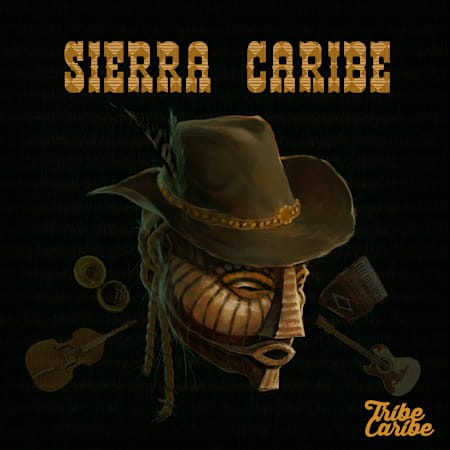/hfxxd96u5quse8kpvose)
Norteño is a genre packed with cultural weight and unmistakable sonic identity. With its signature blend of accordion, bajo sexto, and tololoche, Norteño emerged as a rural voice for the people—music made for family gatherings, long drives through desert landscapes, and the dance floors of northern Mexico and the southwestern United States. But its reach and resonance have since grown far beyond the frontera.
The Origins: Music of the North
Norteño (literally, “northern”) music traces its roots to the late 19th and early 20th century, when German, Czech, and Polish immigrants brought polka and waltz traditions to northern Mexico and southern Texas. Mexican musicians adapted these forms, incorporating them into their own regional storytelling traditions. The accordion and bajo sexto became the genre’s core instruments, and themes of love, hardship, migration, and resistance took lyrical center stage.
Pioneers like Los Tigres del Norte and Ramón Ayala shaped the genre into a form of musical journalism, narrating real-life struggles of working-class communities on both sides of the border.
A Living Tradition: Evolution Through the Decades
Throughout the decades, Norteño has proven to be a resilient and evolving form. The genre shifted in the '80s and '90s with the emergence of Norteño-Banda, Corrido Tumbado, and crossovers with grupero and tejano music. Artists began blending electric bass, synths, and modern recording techniques into the traditional format—preserving its structure while updating its sound.
In recent years, the rise of younger acts like Fuerza Regida, Grupo Frontera, and Peso Pluma has reignited global interest. These artists aren’t just reimagining Norteño for a new audience—they're injecting it with trap beats, reggaeton rhythms, and hip-hop bravado, showcasing the genre’s adaptability and emotional punch.
Sonic Anchors: What Defines Norteño's Sound?
While modern iterations vary wildly, certain sonic elements remain essential:
- Accordion riffs that twist and soar like desert winds
- Staccato plucks of the bajo sexto, grounding melodies with rhythmic texture
- Snare rolls and upbeat rhythms, inspired by polka and ranchera traditions
- Storytelling vocals, often delivered with urgency or romance
It’s these timeless building blocks that producers today are sampling, flipping, and transforming into new musical hybrids.
Sierra Caribe: A Tribute and Toolkit for the Next Generation
To meet this moment, Tribe Caribe presents Sierra Caribe—a sample pack that honors Norteño’s folkloric past while inviting its future. Produced in collaboration with Grammy-winning artist Andrés Levin and producer Jaxx Landry, Sierra Caribe offers a deeply authentic, yet production-ready palette of sounds rooted in Sierreño and Norteño traditions. We caught up with the team to discuss the creative journey behind the pack. Here's our conversation.
Our Conversation with Tribe Caribe
Splice: What inspired the sounds included in this sample pack?
Tribe Caribe: This is our very humble and exciting rendition of this genre which has gone around the world in recent years. Living between México and Cuba we are constantly inspired by what we hear on the streets and the radio, Sierreño being one of those sounds.
S: What was one of the highlights that came out of the studio sessions?
TC: The versatility of these instruments and the different ways they can be recorded. We were also able to get to know this genre through conversations with musicians who recorded it. Each style presents a different challenge as far as planning the sessions in such a way that all instruments will be well isolated and “Splice ready” but without sacrificing the musicians’ desire to sometimes play in tandem while recording.
S: What do you hope the Splice community will do with these sounds?
TC: We are really excited to hear how Splice users will flip and incorporate these sounds into their own productions. As a label we hope to bring the folkloric legacy and traditions of the Caribbean to all genres of popular music.
S: What are some of your favorite recording techniques, plugins, or hardware that helped shape the sound of this pack?
TC: In this specific pack we went for a very natural sound. We wanted to bring a very honest and straight-forward sound of each instrument to give Splice users as much sonic freedom as possible. That being said, our plugin chains consisted mainly of tape emulators, saturators, vintage compressors and room reverbs. Pretty much everything was recorded through SSL preamps. We also love analog chains and compressors!
S: What piece of advice would you give to your younger self starting in music?
TC: Music Production is a craft, and as such you need to put in as much work as you can to sharpen your skills. Never give up and try to always lead a healthy life!
With Sierra Caribe, the past and future of Norteño are now at your fingertips. Whether you're crafting a faithful homage or fusing tradition with innovation, this sample pack invites you to step into the rich tapestry of Norteño—and make it your own.
